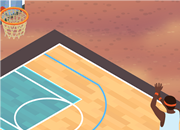What are deserts and what does living there look like? Science Game
This science game helps children practice about deserts. A desert is an area that receives very little precipitation, and leaves the ground unvegetated. A desert is usually barren, dry and without any vegetation. There is still life in deserts, despite the dry conditions. The conditions are often not inviting for humans. Here are some fascinating facts about deserts.
We get less than 10 inches of rainfall per year in a desert
The Sonoran Desert and Mojave Deserts are the most deserted areas in North America. Death Valley receives less rain than the average person, and some areas are even dry for many years. The average annual rainfall for the lower Colorado Valley subregion, however, is only 20 mm (0.78 in).
The desert's temperatures can drop to -3.9 degrees Celsius at night. Daytime temperatures in deserts can reach 38 degrees celsius and nighttime temperatures as low as -10 degrees Celsius. Temperatures in hot deserts can reach 70 degrees Celsius, while temperatures in semi-arid deserts are less than 38 degrees celsius. The average temperature in coastal deserts is 35 degrees celsius. There are also cold deserts that are very arid and often characterized by extreme seasonality.
Deserts often have very high levels of evaporation, in addition to having low rainfall. Even with the relatively low rainfall, deserts can experience extreme temperatures that have a negative impact on the landscape and its vegetation.
Low temperatures
Did you know that desert temperatures are much lower than other areas of the globe? The dry air is responsible for this drastic difference. The desert has almost no humidity and heat traps are reduced by the lack of water. The thick fur of warm-blooded animals like turtles and snakes can protect them from fat. Evaporative cooling is a way for birds and other animals to survive. Water conducts heat through the skin to keep the body cool and comfortable.
Winter temperatures in the desert can be as cold as -2 to 4 degrees Celsius. They can also be mild in summer. The desert average temperature is 20 degrees Celsius (69.9 Fahrenheit) during daylight hours. The amount of rain that fell in the previous day is equaled to the amount produced by dew during the night.
Even though light rains can evaporate, sometimes heavy rainstorms bring 10 inches of rain in a matter of minutes. Low humidity in deserts makes it difficult for clouds to form, so sunlight can shine through a cloudless sky.
Dry soil
Deserts have a different soil composition than other moist areas. The upper horizon in deserts is mostly made up of sand and includes deposits of salt, calcium, and gypsum. Large tracts of subtropical and temperate deserts as well as large areas of Entisol soil make up the continent's Aridisol zones. Entisols are an entirely new type of desert soil. They form on rocky plateaus and gravel plains as well as patches of sand dunes that have been colonized by grasses.
High evaporation
Deserts experience the highest levels of evaporation. This is due to the fact that desert soils are often very coarse, which allows moisture to evaporate. High evaporation rates can also lead to salt accumulation, which reduces plant growth. The lack of water can also limit the number and variety of animals. Desert ecosystems are one of the most fragile on Earth.
Desert pavement prevents rainwater from reaching the soil and causing water runoff. Cryptogamic crusts also hold soil particles in their place and fix nitrogen in soil. Salt crystallizes when there is high evaporation. The rate at which the salt evaporates will determine the size of the crystals.
Flat, stony plains
Flat, stony plains are a common feature of deserts. These plains are known as desert pavements, and they are often devoid of vegetation during droughts. These plains can be transformed into oases when it rains. Similar to the gibber plains of the eastern Sahara, Australia's stony downs are similar. These plains become deserted during droughts, but they quickly transform into a temporary herbfield when the rains come back.
Some deserts have high sand dunes while others have lower sand dunes. Some deserts combine both. Erosion is responsible for the differences in terrain types.
Desert soils form in layers. Holocene is the oldest deposit and is made up of clay particles. These layers vary in texture and color. They contain clay minerals despite their low sand dunes. They take time to form and are affected by living organisms. These deposits are older than Holocene soils which indicates that they were formed more recently.
Nocturnal desert mammals
The lesser bilby is an example of a desert mammal that can be seen at night. These mammals sleep in a supine position and fold their long ears over the eyes. They are able to sense smell and hear well enough to catch prey. These mammals live alone in sand dunes. The spiral tunnels of sand dunes are home to the bilbies.
Other common desert animals include the coyote and mountain lion, badger, coyote and 16 types of bats. The presence of desert mammals is indicative of the climate's extreme dryness. Most desert mammals are nocturnal. Javelinas, mule deer, and other desert animals that are nocturnal include mule deer. These animals eat insects and other vegetation during the day.
Because they are nocturnal, nocturnal desert mammals can be difficult to see. Because of their lack of colored fur, some of them can be difficult to spot. Although it is not common to see them during the day, the black-tailed rattlesnake is the most frequently seen desert reptile.
Desert plants
Fox tail agave is also known as foxtail cactus. It's a great plant for desert environments. This desert plant's leaves are bluish-green, with a red blush around the edges. It produces yellow waxy flowers in full sunlight. The succulent plants do not need to be cared for and retain moisture well over time. This plant is also known as fine-leaved needlegrass, fox tail-agave and fine-leaved nussella.
Another desert-friendly plant is the prickly pear, cactus. It can grow up to 50 feet (15 m) in height, despite its slow growth. This plant's yellow flowers add color to your landscape. This plant is able to withstand temperatures up to 160 degrees Fahrenheit making it ideal for hot and dry climates.
Wildflowers, succulents and cacti are all great choices for a desert gardening area. They are very easy to maintain and are an excellent friend for gardeners. They can be grown in almost any climate. Succulents look great and can be grown in your own garden. There are many types of flowering shrubs that can be grown in deserts. A desert garden can be beautiful and offer a variety of colors









